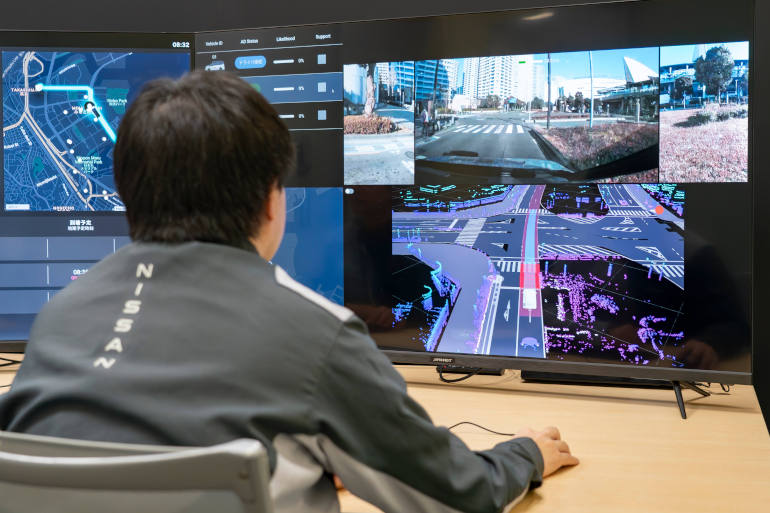Nissan’s recent demonstration of advanced driverless technology in Yokohama marks a major step forward in the future of mobility, with potential impacts for fleet managers and procurement professionals worldwide.
In March 2025, Nissan showcased an autonomous-drive (AD) test vehicle that navigated public roads in a complex urban environment without a driver inside — a first for Japan. The demonstration took place in Yokohama’s Minato Mirai area and represents Nissan’s commitment to resolving transport challenges such as driver shortages, an issue that resonates globally.
The test vehicle, based on the Serena minivan — Japan’s top-selling minivan — is equipped with an impressive array of sensors: 14 cameras, nine radars, and six LiDAR sensors. Mounted on the roof, these sensors benefit from the height of the Serena, providing enhanced detection and situational awareness. Nissan has combined these hardware advances with AI-driven software to significantly improve recognition, behavioural prediction, and control. According to Nissan, this has resulted in smoother, more reliable navigation even in complex traffic scenarios.
For fleet managers, the implications are significant. The ability to deploy autonomous vehicles in urban environments could ease pressures associated with driver shortages and open new possibilities for mobility services. Nissan’s solution includes layers of safety protocols, including rigorous route scenario verification, emergency stop functions, and built-in redundancies.
Since fiscal year 2017, Nissan has been investing in the research and development of autonomous technology. The company draws on global expertise through its Advanced Technology Centre in Silicon Valley and participation in the U.K.’s evolvAD project. These collaborations help ensure the technology is tailored to different traffic and regulatory environments, offering reassurance to fleet buyers considering the future of mobility solutions.
Looking ahead, Nissan plans to scale its testing efforts. Between fiscal years 2025 and 2026, it will conduct demonstration tests with approximately 20 vehicles in Yokohama. This will involve building a broader operational framework and service ecosystem in collaboration with local municipalities and transportation operators. The end goal is to launch commercial autonomous driving mobility services by fiscal year 2027, supported by remote monitoring systems.
Nissan’s initiative is part of a larger collaborative effort with Japan’s Ministry of Economy, Trade and Industry; the Ministry of Land, Infrastructure, Transport and Tourism; and Yokohama City. These bodies are working together through Japan’s Level 4 Mobility Acceleration Committee to create a regulatory and practical framework for autonomous mobility services.
Fleet buyers and procurement managers should note that while fully autonomous vehicles are still undergoing testing, Nissan’s commitment signals that commercial deployment is on the near horizon. For urban fleet operations and transport services, this could mean greater efficiency, reduced labour costs, and enhanced service availability.
Nissan has indicated it will continue to refine its technology and build services not just in Japan, but globally. For fleets in Australia, this is a development worth watching, as similar solutions could soon be available to help tackle local challenges, including regional driver shortages and rising demand for last-mile delivery solutions.
The shift towards autonomous driving is no longer theoretical. Nissan’s advances show that driverless technology is moving from the test track to public roads, with commercial fleet applications in sight.







